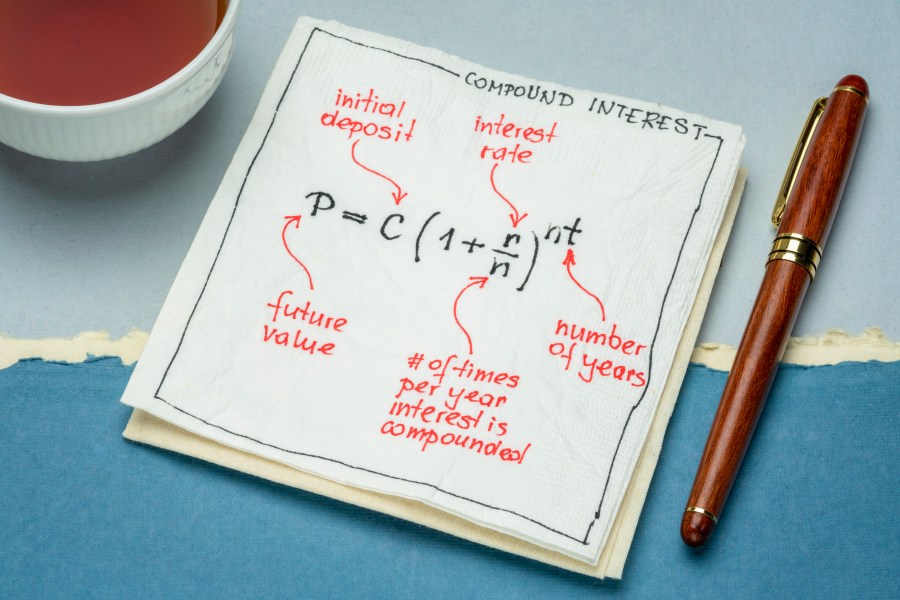TAMPA (BLOOM) – Meet compound interest, where your money doesn’t just sit idly; it multiplies! This isn’t a mystical formula but a practical financial tool that can significantly amplify your savings over time. In this article, we’ll explore the nuts and bolts of compound interest, armed with insights from renowned financial experts. Let’s dive into this financial journey and discover how to turn your savings into a robust financial future.
Understanding Compound Interest
What is Compound Interest? Compound interest is the interest on a loan or deposit calculated based on both the initial principal and the accumulated interest from previous periods. Unlike simple interest, which only earns on the principal amount, compound interest earns on both the principal and the interest that has been added to it.
Margarette Burnette, a senior writer at NerdWallet, emphasizes, “Compound interest can turn modest savings into a substantial nest egg over time. It’s about harnessing the power of earning interest on your interest.”
The Magic of Compounding
Real-World Impact To understand the true magic of compound interest, let’s look at an example. Suppose you invest $1,000 in an account with an annual compound interest rate of 5%. After the first year, you earn $50 in interest, making your balance $1,050. In the second year, you earn interest on the new balance, not just the original $1,000. Over 20 years, your initial $1,000 investment could grow to over $2,650 without any additional contributions.
Tim Manni from NerdWallet adds, “The earlier you start saving, the more you benefit from compound interest. Time is an essential element in this financial equation.”
Calculating Compound Interest

Demystifying the Formula The formula for compound interest is A = P(1 + r/n)^(nt), where:
- A is the amount of money accumulated after n years, including interest.
- P is the principal amount (the initial sum of money).
- r is the annual interest rate (decimal).
- n is the number of times interest is compounded per year.
- t is the time the money is invested for in years.
Strategies for Maximizing Compound Interest
Early Bird Gets the Worm Starting early is a crucial strategy for maximizing compound interest. Regular contributions, even if small, can substantially increase the final amount due to the compounding effect.
Compound Interest in Different Financial Products
Choosing the Right Vehicle Various financial products use compound interest, including savings accounts, CDs, and retirement accounts. Each has different risk levels and interest rates, so choosing the right one for your goals and risk tolerance is vital.
Tips and Tricks for Saving and Investing
Setting Goals and Planning Developing a savings plan and setting clear financial goals are key. Budgeting to free up money for investing can help maximize the benefits of compound interest.
Potential Pitfalls and How to Avoid Them
Navigating Challenges Inflation can erode the purchasing power of your savings, so it’s essential to choose investments that outpace inflation. Diversification is also crucial to mitigate risk.
Kathleen Burns Kingsbury, a wealth psychology expert, notes, “Understanding the psychological aspects of saving is as important as understanding the financial ones. A mindset focused on long-term goals and patience is crucial for leveraging the benefits of compound interest.”
Your Financial Future Awaits
As we wrap up this financial expedition, remember that compound interest is more than just a concept; it’s a powerful tool in your wealth-building arsenal. By starting early, making regular contributions, and choosing the right financial vehicles, you can watch your money grow exponentially over time. Embrace the power of compound interest, and let your financial dreams take flight.







